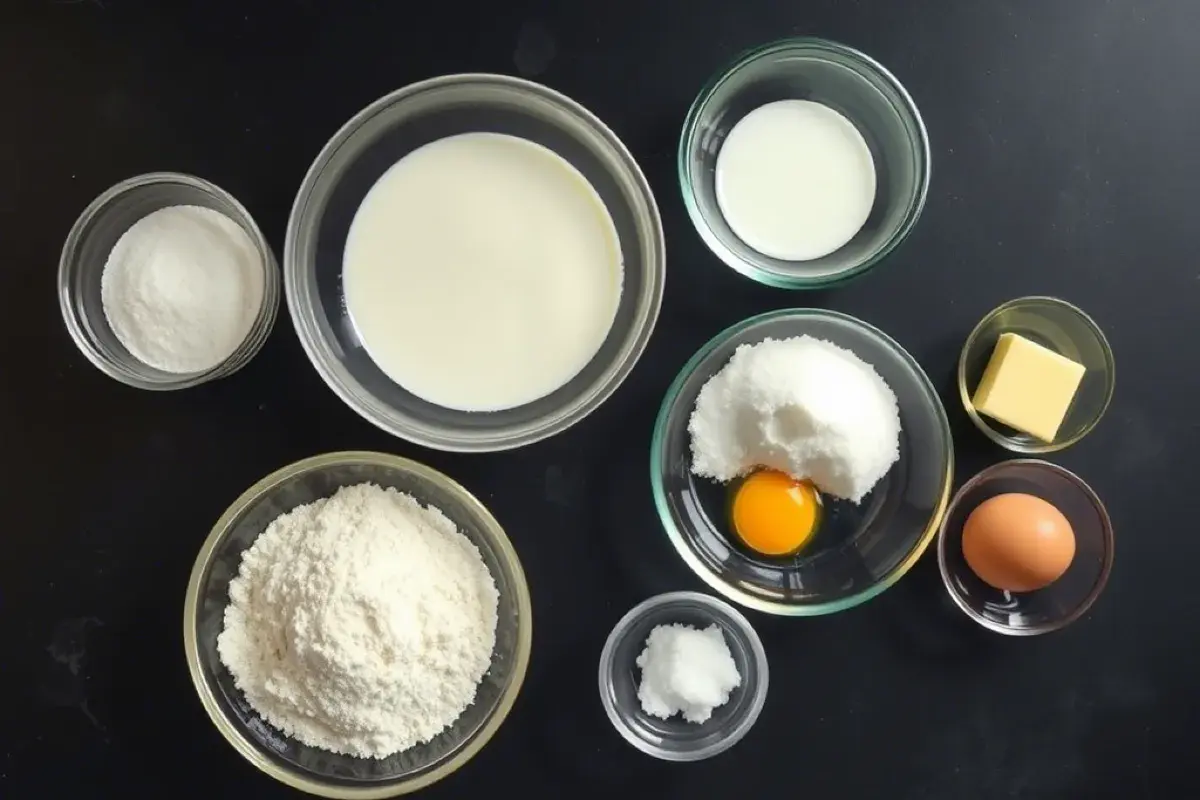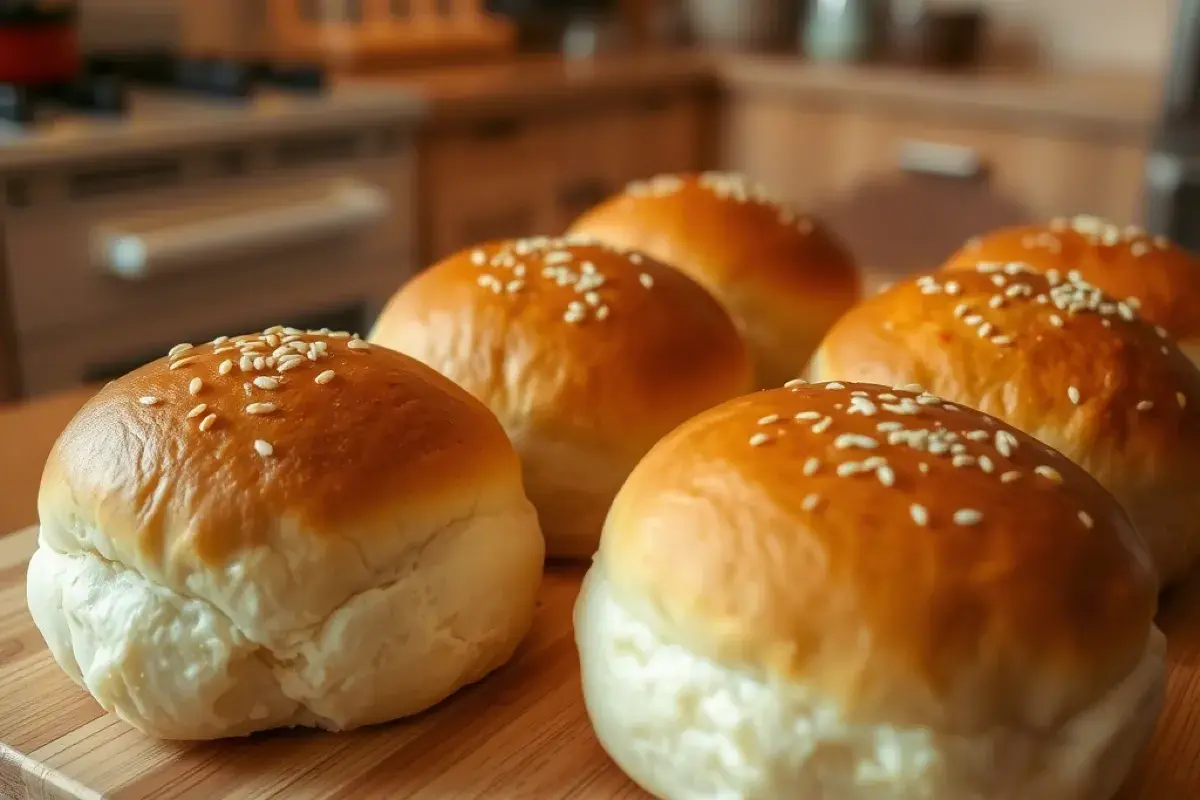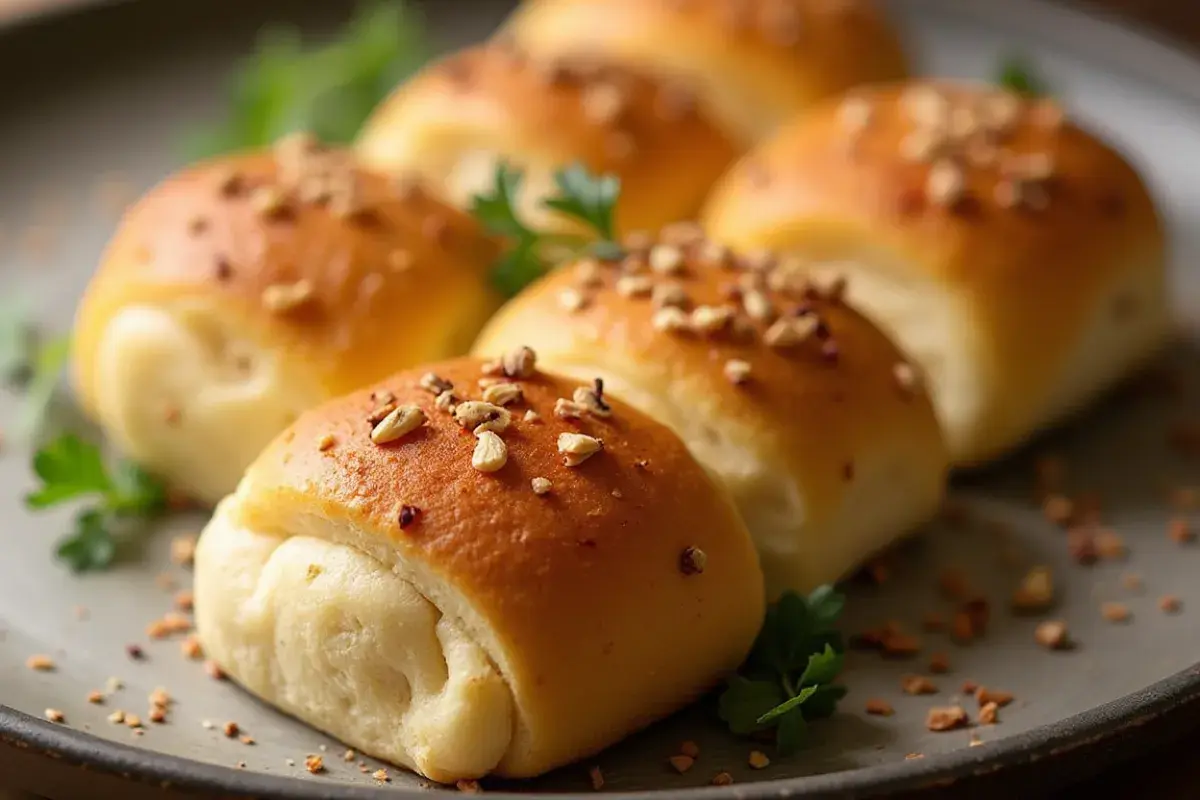Introduction: The Timeless Tradition of Dinner Rolls
Dinner rolls have been a staple in households for centuries, offering a soft and fluffy complement to any meal. Their origins trace back to European baking traditions, where artisans perfected the art of yeast-leavened bread. Over time, dinner rolls evolved into the beloved side dish we know today, commonly served at holiday feasts, Sunday dinners, and special occasions. Whether you enjoy them plain, buttered, or as a sandwich base, homemade dinner rolls provide unmatched freshness and flavor.
Table of Contents
Essential Ingredients and Substitutes
A perfect dinner roll requires simple, high-quality ingredients. Below is a detailed ingredient list, along with budget-friendly and health-conscious alternatives.
| Ingredient | Quantity | Alternative Options |
|---|---|---|
| All-purpose flour | 4 cups | Whole wheat flour (for a fiber boost) |
| Warm milk (110°F) | 1 cup | Almond or oat milk (for dairy-free) |
| Active dry yeast | 2 1/4 tsp | Instant yeast (reduce rise time) |
| Sugar | 3 tbsp | Honey or coconut sugar |
| Unsalted butter (melted) | 4 tbsp | Olive oil or vegan butter |
| Egg | 1 large | Flaxseed egg (for vegan version) |
| Salt | 1 tsp | Sea salt or Himalayan salt |

Step-by-Step Instructions for the Perfect Dinner Rolls
Step 1: Activate the Yeast
- In a small bowl, combine warm milk, sugar, and yeast.
- Let it sit for 5–10 minutes until foamy. This ensures the yeast is active.
Step 2: Prepare the Dough
- In a large mixing bowl, combine flour and salt.
- Make a well in the center and add melted butter, egg, and the activated yeast mixture.
- Stir until a dough forms, then knead on a floured surface for 8–10 minutes until smooth and elastic.
Step 3: First Rise
- Place the dough in a greased bowl, cover with a kitchen towel, and let it rise for 1–1.5 hours until doubled in size.
Step 4: Shape the Rolls
- Punch down the dough and divide it into 12–15 equal portions.
- Shape each portion into a smooth ball and arrange them in a greased baking dish.
Step 5: Second Rise
- Cover the rolls with a cloth and let them rise for 30–45 minutes until puffy.
Step 6: Bake to Perfection
- Preheat oven to 375°F (190°C).
- Brush the rolls with melted butter and bake for 15–18 minutes until golden brown.
Step 7: Serve and Enjoy
- Remove from oven and brush with additional butter for a glossy finish.
- Serve warm and enjoy with your favorite meal.
Nutritional Value and Health Benefits
Dinner rolls offer a balance of carbohydrates, protein, and fats. Here’s a breakdown of their nutritional benefits:
- Energy Boosting: Carbohydrates provide sustained energy.
- Protein Source: The egg and flour contribute to protein intake.
- Healthy Fats: Using olive oil or butter adds essential fatty acids.
- Fiber Content: Whole wheat flour increases dietary fiber, aiding digestion.
Serving Suggestions and Food Pairings
Dinner rolls are incredibly versatile and pair well with a variety of dishes:
- Soups & Stews: Enjoy with creamy tomato soup or hearty beef stew.
- Holiday Feasts: Serve alongside roasted turkey, mashed potatoes, and green beans.
- Breakfast Option: Slice and spread with jam, honey, or peanut butter.
- Sandwich Base: Use as mini sliders for pulled chicken or veggie burgers.

The Ultimate Dinner Rolls Recipe: Soft, Fluffy, and Irresistible
The Origin and History of Dinner Rolls
Dinner rolls have a rich history that dates back centuries, originating in European baking traditions. These small, soft bread rolls were first crafted by skilled bakers who mastered the art of yeast fermentation, creating airy and flavorful bread. Over time, dinner rolls became a staple in many cultures, particularly in Western Europe and North America.
One of the earliest records of bread rolls comes from 16th-century England, where small, round bread was served as an accompaniment to meals in noble households. By the 18th century, bread-making techniques had improved, and rolls became popular among common people as well.
In the United States, dinner rolls gained widespread popularity in the 19th century with the rise of commercial baking. Different regions developed their own variations, such as Parker House Rolls from Boston, which are known for their buttery and flaky texture. The American South also embraced dinner rolls, often making them with buttermilk for a slightly tangy flavor.
Cultural Significance of Dinner Rolls
Dinner rolls are now a beloved side dish across the globe. They are especially prominent in holiday feasts, including Thanksgiving and Christmas dinners in the United States. In many cultures, bread symbolizes hospitality and sharing, making dinner rolls a cherished part of family meals and celebrations.
Whether served with a festive holiday spread, paired with a bowl of soup, or enjoyed fresh from the oven with butter, dinner rolls have stood the test of time as a comforting and delicious addition to any meal.
Final Thoughts
Homemade dinner rolls bring warmth and comfort to any meal. With simple ingredients and a straightforward method, you can bake the perfect batch every time. Whether for special gatherings or everyday dinners, these fluffy rolls are sure to impress your family and guests.
FAQs
1. Can I make dinner rolls ahead of time?
Yes! You can prepare the dough and refrigerate it overnight before baking.
2. Why are my rolls not fluffy?
Ensure the yeast is active and allow enough rising time for light, airy rolls.
3. Can I freeze baked dinner rolls?
Yes, store them in an airtight bag for up to 3 months and reheat before serving.
4. How can I make my rolls extra soft?
Use warm milk and brush with butter after baking for extra softness.
5. What’s the best way to reheat dinner rolls?
Warm them in an oven at 300°F for 5 minutes or microwave for 15–20 seconds.
By following this guide, you’ll master the art of homemade dinner rolls and elevate your dining experience with fresh, bakery-quality bread!

